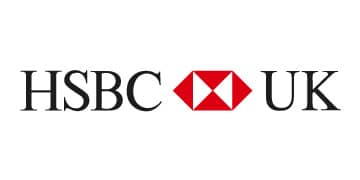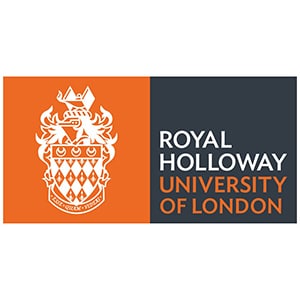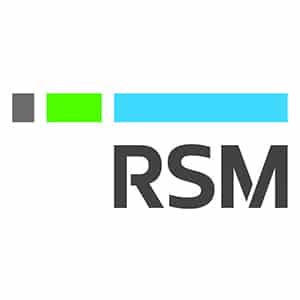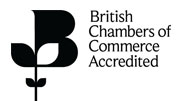Latest News
The UK-EU trade agreement: damage limitation
6th January 2021

Economic commentary – 4 January 2021
Key points:
The economic aspects of the Trade and Co-operation Agreement (TCA) struck between the UK and the EU go further than the EU’s other recent free trade agreements. The agreement has been ratified by the UK, and has been provisionally applied by the EU pending formal endorsement by the European Council and the European Parliament.
There will be no tariffs on trade in goods, provided that rules of origin requirements are fulfilled. But there is only limited provision for trade in services, with financial and digital services subject to forthcoming equivalence decisions from the EU.
Although measures have been put in place by the UK government to ensure that goods continue to move freely, the shift to these new trading arrangements will impose a significant cost burden on British businesses. This will dampen economic activity in the next few months, though the impact may be swamped by ongoing Covid restrictions. Looking further ahead, the new barriers to the movement of goods, services, and people from the EU represent ongoing headwinds to economic growth.
________________________________
Four and a half years after that momentous day in June 2016 when the people of the UK voted narrowly to leave the European Union, the terms of that exit are finally known. After the many dramas of recent weeks, the Trade and Co-operation Agreement (TCA), which was struck between UK and EU negotiators on the afternoon of Christmas Eve, was broadly in line with what had been expected once it became clear that the UK would be leaving the EU’s Single Market and Customs Union. For British businesses, it’s a far cry from the access that they have enjoyed up to now to the EU’s Single Market, but it avoids the worst effects of having to trade on World Trade Organization (WTO) terms. Just as important, both sides can claim that they have preserved their ‘red lines’, and the fact that a complete rupture was avoided means that relations can continue on a civil basis. The conclusion of this agreement is an important milestone in UK-EU relations, but it doesn’t mean that there is now nothing to talk about: there will always be matters of mutual interest that will need to be discussed, and next on the agenda will be the equivalence arrangements for financial services and data handling.
The TCA completed its ratification process in the UK shortly after midnight on 31 December, following the passage through both Houses of Parliament of the European Union (Future Relationship) Bill. On the EU side, it was agreed by the European Council on 30 December that the TCA should be implemented on a provisional basis. On the strength of these approvals, the document was signed in Brussels and then conveyed to London for signature by the UK Government.
It’s not unusual for the EU to implement agreements on a provisional basis. That is how the trade agreement with Canada was brought into effect, following rejection by a regional assembly in Belgium. The UK-EU TCA will, in any case, need to be translated into all of the EU’s 24 working languages, a process which might also include some tidying up of the text, such as removing references to outdated computer software and encryption techniques. It will then need to be approved formally by the European Council (heads of state) and the European Parliament. Media reports suggest that it may be March before the European Parliament is able to consider the matter.
Going further than most FTAs
The first point to note about the UK-EU TCA is that it covers more than economic relationships. As has been widely reported, the TCA runs to 1,246 pages, although around 800 of these pages comprise appendices and protocols. It’s really three agreements in one: a free trade agreement (FTA); provisions related to the security of citizens, including new arrangements for sharing information on criminals and suspects; and a governance framework, including mechanisms for resolving disputes.
The governance arrangements were, along with fishing rights, among the most contentious areas of the negotiations. The UK has succeeded in having the European Court of Justice (ECJ) removed from the process, and disputes will instead be adjudicated by panels of arbitrators. For its part, the EU succeeded in including mechanisms for either side to apply so-called “cross-cutting” remedies: these remedies mean that, if one party wins a ruling in its favour in relation to a dispute in one area, it can take measures, including import tariffs and quotas, in other areas, provided that the response is proportionate. The UK has, however, secured a minor concession inasmuch as retaliatory measures cannot target trade in financial services.
Compared to other recent FTAs concluded by the EU – the agreements with South Korea, Canada, and Japan, for example – the UK/EU TCA is a good deal. In particular, it eliminates import tariffs and quantity restrictions on the cross-border movement of all goods, provided that rules of origin requirements are satisfied. Other recent FTAs have tended to retain tariffs for some sensitive sectors, in particular for agricultural produce: under the EU’s FTA with Canada for instance, which came into effect in 2017, duties are still levied on poultry and dairy products. But judged against the access which both sides enjoyed in each other’s markets while the UK was in the EU’s Single Market, then in many respects the TCA is thin gruel.
This is especially the case when it comes to cross-border trade in services. The financial services sector, and any business that needs to store and move data related to EU citizens, will have to await decisions from Brussels on the ‘equivalence’ of regulations. The positive mood music that has carried over from the successful outcome of the TCA negotiations may make this process quicker and easier, but British firms operating in these sectors will always face the risk that these approvals might be withdrawn. There are also plenty of other areas in which providing services will become harder. There is no guarantee, for example, that professional qualifications obtained in the UK by the likes of lawyers and doctors will be recognized in EU countries, while posting employees abroad on a temporary basis will be subject to the differing rules that apply in each member state.
It could be argued, therefore, that the UK-EU TCA is not well aligned to the services-heavy structure of the British economy. Yet it’s also true that many other FTAs concluded around the world in recent years have made only limited forays into trade in services. (It’s one of the key ambitions of the FTA that is currently under negotiation between the UK and the USA that it should enhance market access in these areas, especially for financial and digital services, in recognition of the fact that the two parties are already the world’s largest exporters of services.) And notwithstanding that the UK-EU TCA is focused on trade in goods, the elimination of tariffs will come as a huge relief to many businesses, especially those involved in farming and food manufacture, and also for the automotive sector. In particular, high import duties would have made it uneconomic to trade many meat, dairy, and cereal products. But, as with similar FTAs, the waiving of tariffs is subject to an important caveat: they are only waived provided that imported goods satisfy the ‘rules of origin’ requirements set out in the agreement.
These rules go a long way to explaining why modern free trade agreements often run to hundreds, sometimes thousands, of pages. They stipulate the minimum content of a product, often measured at ex-works prices, that must be locally sourced, with products defined down to the six-digit, or subheadings, level of the Harmonised System (HS). This is the system, administered by the World Customs Union, which is used to classify all cross-border merchandise trade.
In essence, the ‘rules of origin’ are designed to ensure that, in order to qualify for relief from tariffs, exporters must do more than basic assembly and finishing processes. Under these rules, importing a car into the UK from Japan, applying a coat of paint to it, then exporting it tariff-free to the EU is not permissible, and vice-versa. Similarly, importing cheese into the UK from a non-EU country, grating it and packing it into plastic bags, and then exporting it to the EU would likewise not qualify for exemption from the hefty EU import tariff.
Rules of origin can be fiddly and costly to adhere to. It’s therefore essential that any business trading goods with the EU in either direction is aware of how these rules apply to the products they are moving. For some manufactured goods where tariffs are low, it’s not unknown for businesses to simply pay the tariff rather than going to all the expense and hassle of validating the percentage of local content. In other cases, re-jigging supply chains to get the local content above the required threshold may prove impractical or too expensive. So despite the over-arching statement that there will be no tariffs, in reality they won’t disappear.
In the case of motor vehicles, for instance, the UK had asked that the local content requirement be set at 50%. But the EU wouldn’t budge on this point, with the threshold being set at 55%, as it is for many other goods. The TCA does allow ‘cumulation’, or aggregation, of local content to include materials and components from the other party. So, in practice, a car exported from the UK to the EU will avoid tariffs (in this case of 10%) provided that at least 55% comprises UK and EU content. But rules of origin may still prove problematic for products which currently incorporate a high proportion of materials and components from the likes of China and Japan.
A notable omission from the TCA is any mechanism for the ‘mutual recognition of conformity assessment’ (MRCA) of products. This would allow exporters to have their goods certified as meeting the standards required by the other party to the agreement at certified testing facilities in their own country. The EU has such agreements in place with the United States, China, and Australia, but doesn’t have one with the UK. This means that exporters may have to get their products certified in each market, although there are exceptions, such as for low-value items, ‘organic’ produce, and car parts which have a United Nations type approval certificate.
While the TCA has less to offer for those who trade services, it goes beyond other FTAs in some important ways. One of the biggest concerns about the post-Brexit arrangements was about the freedom of road hauliers from the UK to travel to and from EU countries. Horror stories abound of the difficulties experienced by Turkish lorry drivers in obtaining the necessary permits to travel throughout the EU. As it turns out, British truckers will be able to travel to and from EU countries, even if running empty, and will also be able to undertake a limited number of journeys from one point to another in the EU. Given the volume of goods which are transported by lorry across the English Channel and the Irish Sea, these provisions, on their own, will do much to ease logistical headaches.
Smoothing some of the harder edges
Many businesses in both the UK and the EU will cheer the fact that an agreement has been reached, though they will not quickly forget the logistical headaches that they had to deal with as the negotiations dragged on until just a few days before the transition period ended. Many countries have experienced port congestion in recent months, as consumer spending has recovered from the lockdowns earlier in the year, and as governments have scrambled to procure huge quantities of personal protective equipment; but in the UK’s case, there is no doubt that matters were made worse by extensive stockpiling ahead of the end of the transition period. And even though a “no-deal” outcome has been averted, many businesses may still be glad of extra inventories as they become accustomed to the new arrangements for importing and exporting goods.
Despite the TCA, there is no getting away from the huge changes that took effect from 11pm on 31 December. Those involved in exporting goods from the UK to the EU now face the full panoply of checks and paperwork that the EU applies to all goods arriving from outside the bloc. Matters will be somewhat easier for those importing goods into Britain from the EU, as the UK government has put in place a raft of transitional measures to help ensure that goods continue to move freely: the new Border Operating Model will not be fully implemented until 1 July; importers won’t need to complete Safety and Security certificates for the first six months; and those who import animal and plant products won’t need to provide pre-notification and the relevant health certificates until April. Meanwhile payments of import VAT and any import duties can be deferred for six months – but these must still be paid eventually, and businesses are expected to maintain all relevant records.
The ending of the transition period on 31 December has not only ushered in a new relationship between the UK and the EU: under the terms of the Protocol on Ireland and Northern Ireland, which formed part of the Withdrawal Agreement, it has also brought changes to the way in which goods flow between Great Britain and Northern Ireland. There is now effectively a border in the Irish Sea, with Northern Ireland remaining part of the EU’s customs union and also applying EU rules on VAT. The Joint Committee which oversees the operation of the Protocol reached some important decisions at a meeting on 8 December: customs declarations will be required when goods are moved from Great Britain into Northern Ireland, although the EU has dropped its demand for declarations when goods are moved in the other direction. Some grace periods have also been agreed, notably in relation to the requirement for Export Health Certificates for animal and plant products entering Northern Ireland, and also for the movement of medicinal products. The EU imposes a general prohibition on imports of chilled prepared meat products, such as mince and sausages, but these will still be possible until the end of June.
Other changes
As if all that wasn’t enough for businesses to get to grips with, there are other things that will now be different as a consequence of the UK’s exit from the EU. Among the most important of these are the UK’s new schedule of import tariffs, and the new rules relating to migration. The new schedule of import tariffs – UK Global Tariff, or UKGT – was announced last May, and sets out the duties that are now applied to goods imports which are not subject to preferential trade agreements. It replaces, and to some degree simplifies, the EU’s Common External Tariff (CET) which was applied until 31 December. In many instances, simplification means that duty rates are just rounded down to the next even percent, so that a levy of 15.8% is cut to 14%. The UKGT retains very high duties on many food products; but it does eliminate what are often considered to be ‘nuisance tariffs’, that’s to say those that are under 2.5%.
The UK government has also taken the opportunity afforded by leaving the EU to put in place a new and more restrictive immigration system. The unfettered access previously enjoyed by EU citizens wanting to work in the UK has now ended, and the new points-based system will make it much harder for employers to hire lowerskilled (or at least, lower-paid) people from EU countries. With the Covid pandemic still ravaging the country and with many businesses forced to close or furlough some of their staff, labour shortages won’t be an immediate concern for most in the coming months. But in the longer term the tougher immigration requirements may force businesses to consider different approaches to the hiring, retention, and training of staff, and also to automation.
Rolling over the deals
For UK exporters and importers, the other good news – on top of the TCA deal with the EU – is that the EU’s most important trade agreements with other countries have been successfully rolled over. Had this not been achieved, Britain’s trade with those countries would have reverted to WTO terms. Altogether, these FTAs cover around an eighth of Britain’s international trade; and with EU trade covered by the TCA, it means that around 60% of Britain’s bilateral trade will now take place under some form of preferential agreement. That leaves the USA and China as the biggest of the missing pieces.
The most significant of these continuity agreements are with Switzerland, Canada, Turkey, Japan, South Korea, and Singapore. The agreement with Turkey could only be finalized once the new trading relationship between the UK and the EU became known (as Turkey is in a customs union arrangement with the EU for non-agricultural goods), and was only concluded on 29th December. It should be noted, however, that some of these deals have only been implemented in the past year or so, so that they’ve yet to make much of a difference, given that tariff reductions and other measures are often phased in over several years.
A less open economy
The avoidance of a “no deal” Brexit is clearly good news, and reduces the risk of disruption to trade during the coming months. And with Covid restrictions having been tightened again in the past few weeks, any negative impact of the new trading arrangements with the EU will be eclipsed by the economic fallout from the pandemic. Financial markets have been cheered, not just by the news of the TCA but also by the licensing on 30 December of the Oxford/Astrazeneca vaccine for use in the UK. On the currency markets, the pound should now avoid a decline towards parity against the euro (an outcome that had been anticipated in the event of a “no deal” Brexit), though any revival will probably depend more on progress in tackling the Covid pandemic, and the implications for the government finances, than on the conclusion of the Brexit process.
Nonetheless, the TCA marks a very significant change in Britain’s economic relationship with the countries of the EU. At a time when many countries are seeking to forge new trade agreements – the Regional Comprehensive Economic Partnership (RCEP) in Asia is the latest to make it across the finish line – the UK is a rare example of a nation that is walking away from an existing trade agreement, and a very deep one at that. The bottom line is that the UK economy is now not as open as it was before 1 January, with new barriers inhibiting the flows of goods, services and people with some of its most important trading partners.
Over time, it may be possible to mitigate the negative impact of this by striking new FTAs, by adopting a more agile approach to regulation, and by taking a more relaxed approach to immigration. But no amount of trade agreements with other countries will make up for no longer being part of the EU’s Single Market, while loosening regulations brings obvious risks, as instanced by the financial crisis of 2007-09, and immigration policy will remain a political hot potato. It’s therefore likely that – even with the new TCA in place – the UK will pay an economic price over the long-term for leaving the EU, in the form of slower economic growth relative to near neighbours in western Europe.
Mark Berrisford-Smith Head of Economics, Commercial Banking HSBC UK
This economic briefing is issued by HSBC UK Bank plc (“HSBC UK”) for information purposes only. It is not intended to constitute investment advice, and no liability can be accepted by HSBC UK for recipients acting independently on the contents. The information presented here is based on sources believed to be reliable, but HSBC UK accepts no liability for any errors or omissions. Unless otherwise stated, any views, forecasts, or estimates are those of HSBC UK, which are subject to change without notice. Issued by HSBC UK Bank plc HSBC UK, CMB Economics, 71 Queen Victoria Street, London EC4V 4AY HSBC UK Bank plc 2021 All rights reserved


























